



The polemic generated by Leoniceno’s 1492 pamphlet–which was not silenced by the publication of Dioscorides’ De materia medica in 1499–forced Leoniceno to clarify and defend his thinking through repeated publications until 1518. Contradictorily enough, whereas the 1492 work was about correctly naming medicinal plants, snakes, and other natural substances used in medicine, in his 1503 work Leoniceno amended his thoughts and wrote that specific technical terms are not important, provided people knew what they were referring to. Taking “viper” (called tiro in Latin) as his example, which was used for the preparation of theriac, he concludes the polemic with a verdict as brief and bright as it is virulent: “…these people may speak as they want provided they do not ignore what species of snake tiro is” (“…loquantur ipsi ut velint…modo quis sit tiro…non ignorent…”). This formula put a de facto end to the epistemology promoting the use of Greek scientific lexicology and literature, and by way of consequences opened the door to works that explored the natural world on a new basis.
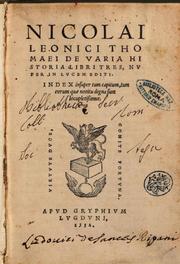
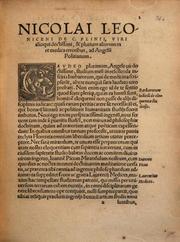
II + 54 + II ff., 204 x 152 mm, A-M2, N3. Bologna: Joannes Antonius, Junior of the Benedictines, 1518.
Latin with Greek passim (fragments from Greek authors, e.g. Aristotle, Dyascorides, Galen). Full-page text with marginal summaries of key points printed alongside the text. Title in Blackletter, text in Roman. Ornamented printed initials. Blank spaces left for Greek type.
Z233.I8 L554d
[MB]
For the biography of Leoniceno, see 4.1.
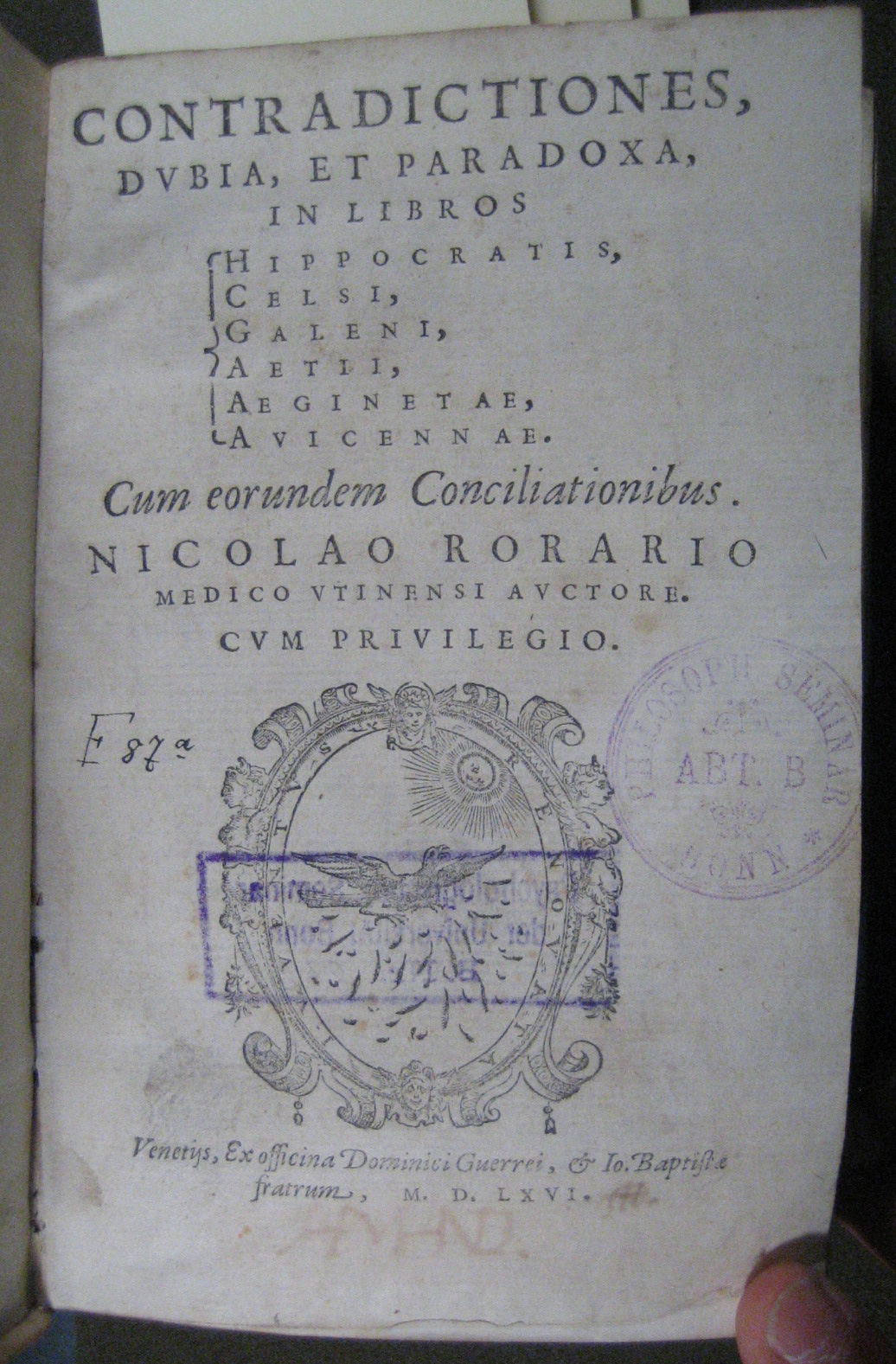
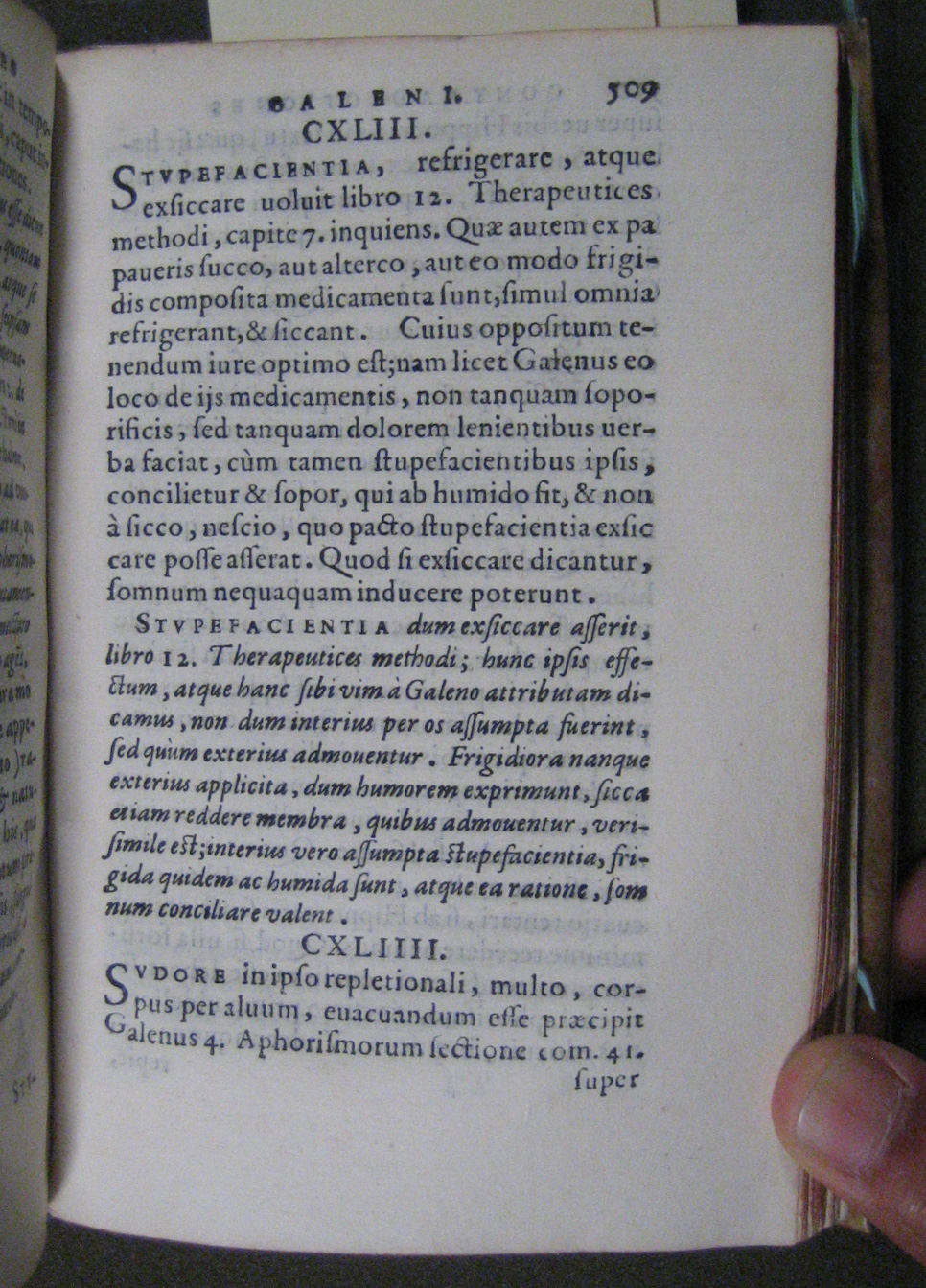
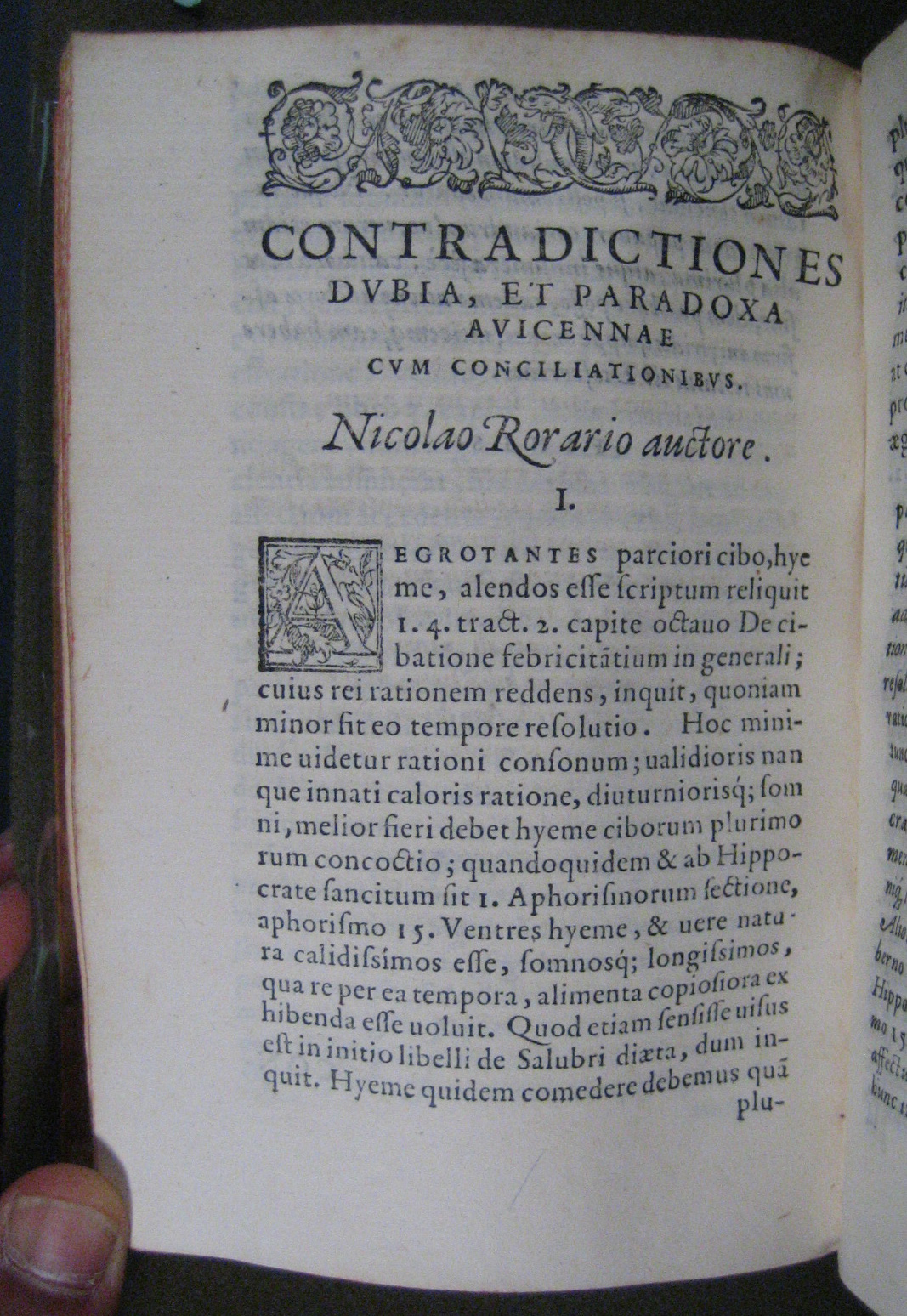
II+652+1+IV ff., 160 x 110 mm, a-b8, A-Z8, AA-PP8, QQ-QQ6+1. Venice: Franciscus et Gaspar Bindinus, 1566.
WZ 240 R787c 1566
Topics are in alphabetical order. Books are divided into two parts; Galen and Avicenna. Page O6 has an excerpt of Homer’s Iliad in Greek.
Latin. Full-page layout. Mix of italic and roman. On p. 217 (= f. O6), fragment from Iliad printed in Greek. Incorrect page number on ff. FF-FF4 (verso), FF5-FF7 (recto and verso), and FF8.
[CP]
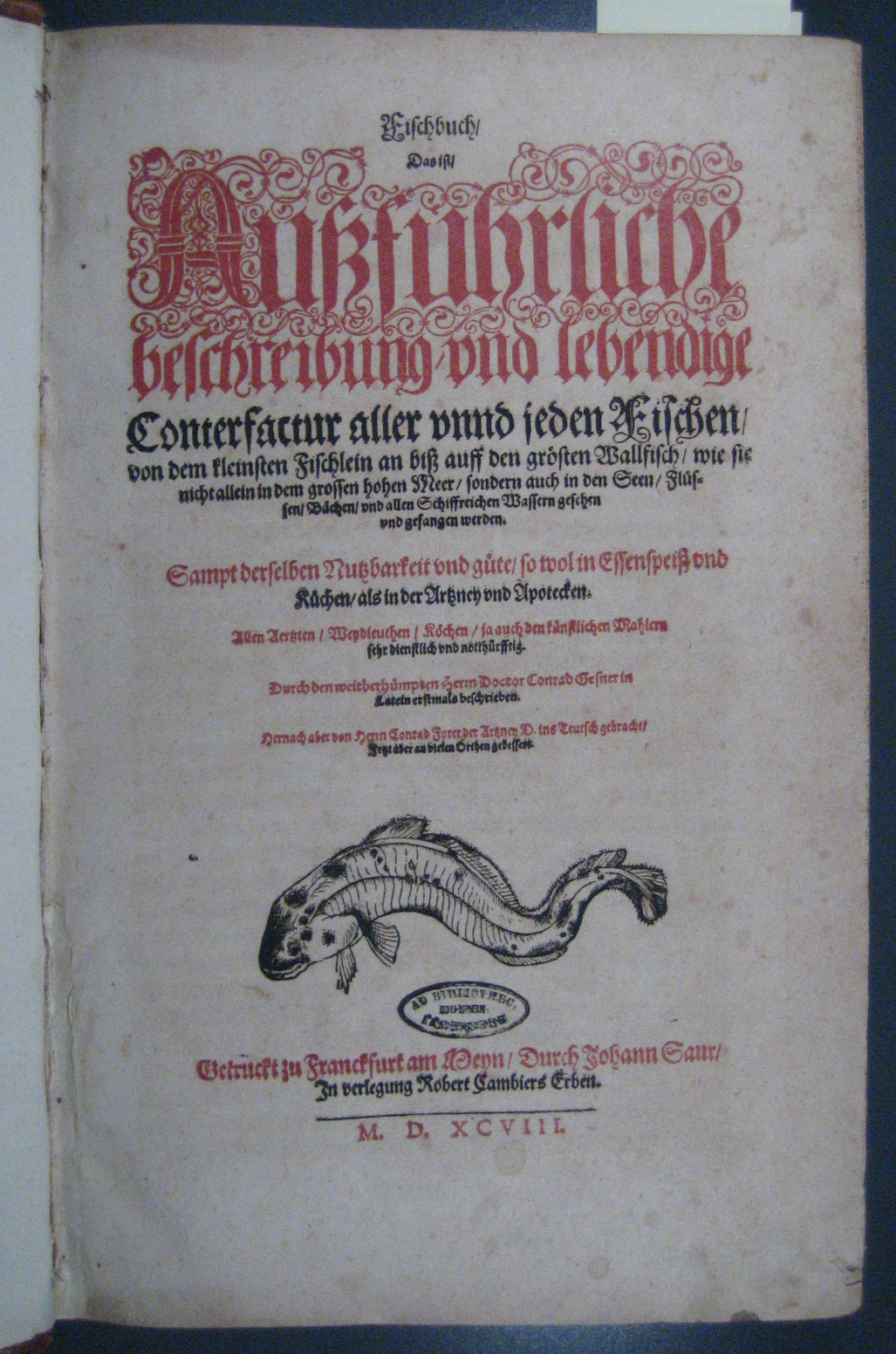
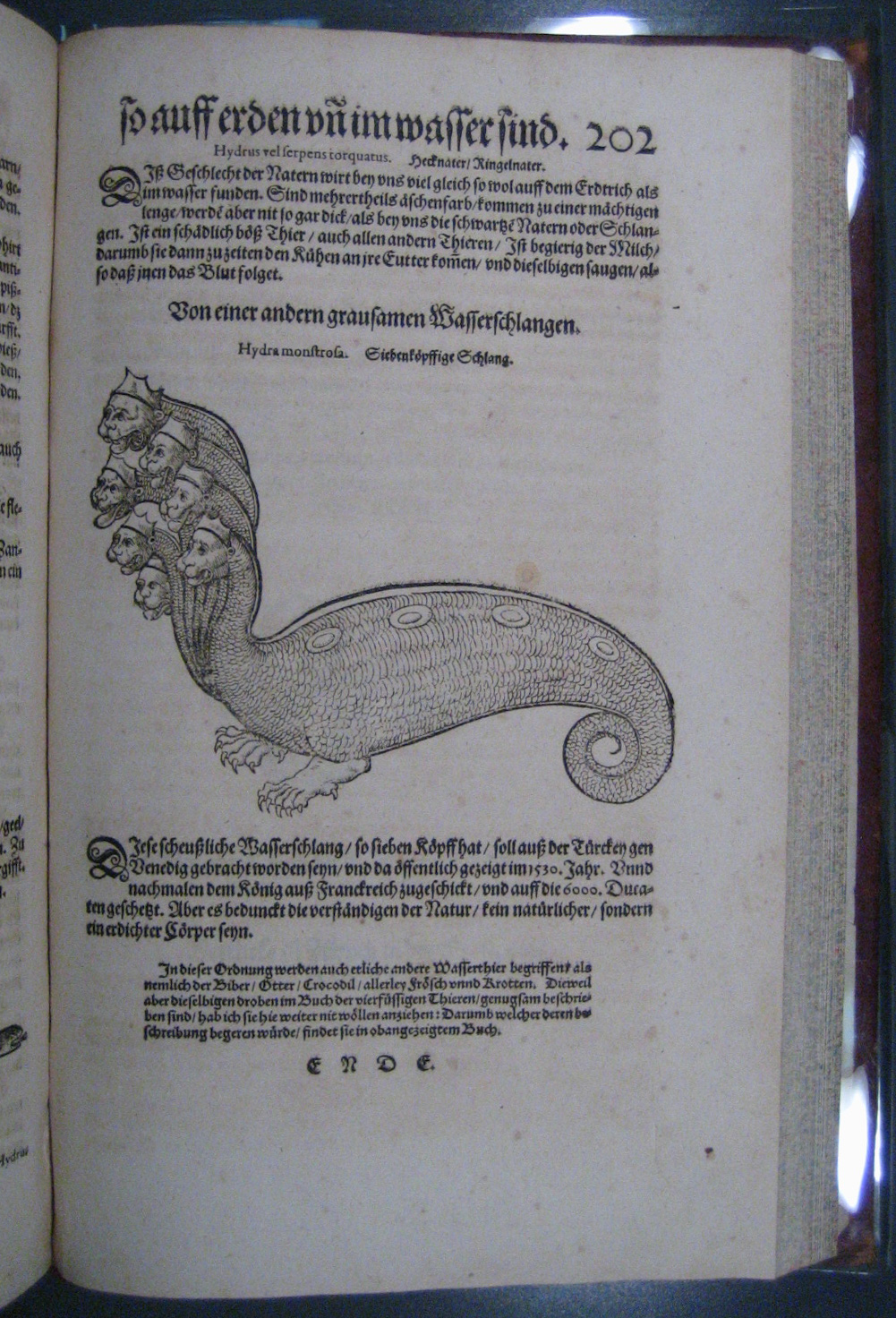
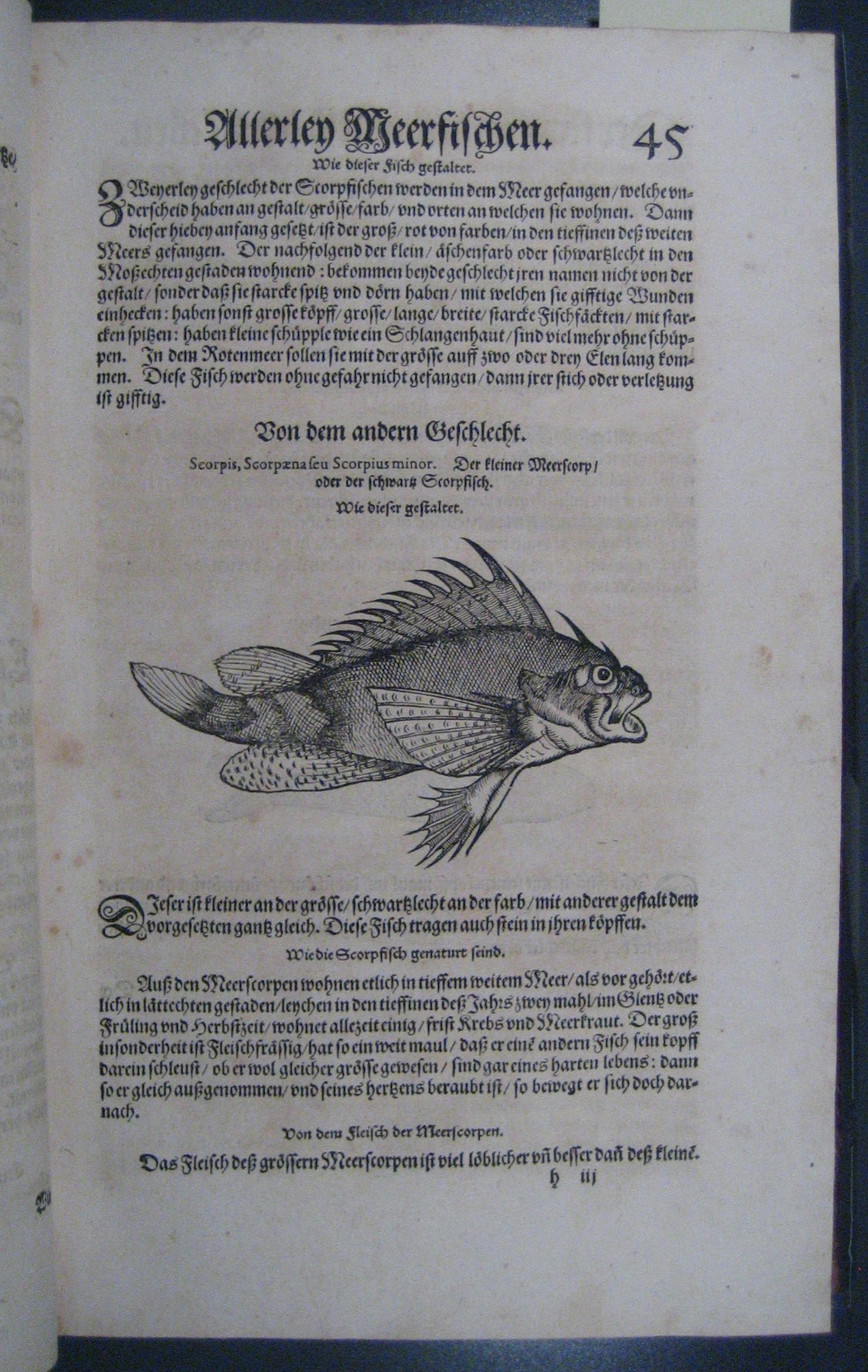
I+356+II ff., 380 x 250 mm, aaa-aaa6, a-z6, A-R6, S-S4. Frankfurt: Johann Gaur, 1598.
Book on fishes, that is, exhaustive description and vivid reproduction of each and every fish, from the smallest to the largest as they can be seen and caught not only in the depth of seas, but also in abite auff to how they are geschen and caught not only in the great depth of sea, but also in the lakes, rivers, creeks, and all navigable waters.
Uses of the words Pharmacies (Apotecken).
German. The German text is printed in Schwabacher, a traditional German blackletter style that was used in Germany long after blackletter typefaces became unfashionable in the rest of Europe. The typeface came to be associated with the German language and national identity. The Latin translations are set in roman type, visually connoting the language. Two-color printing on title page.
QL41.G331f 1598
Konrad Gessner, (1516-1565)
[CP]
Contribution date: February 2016